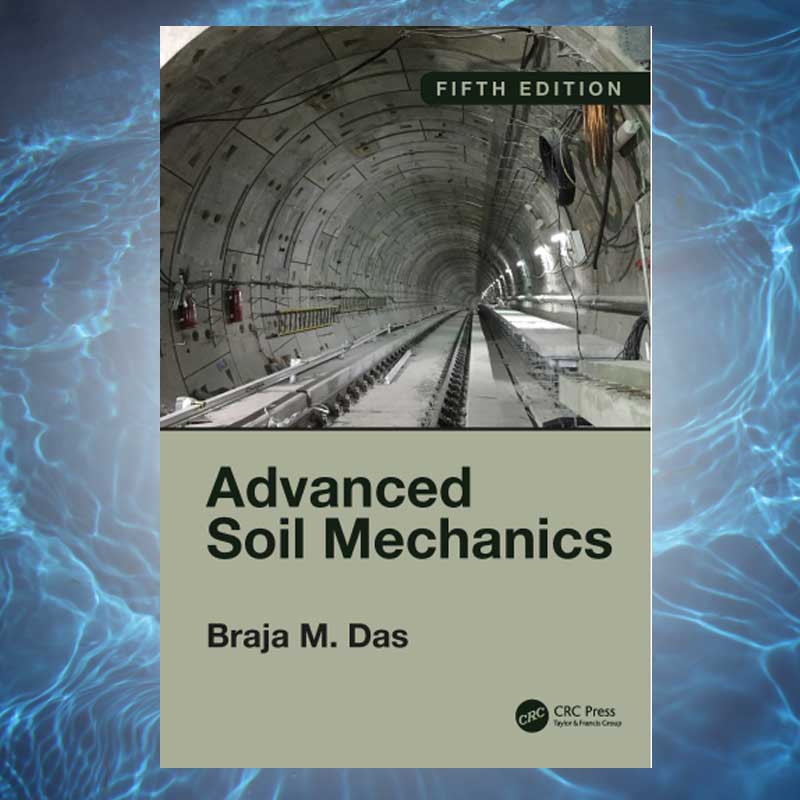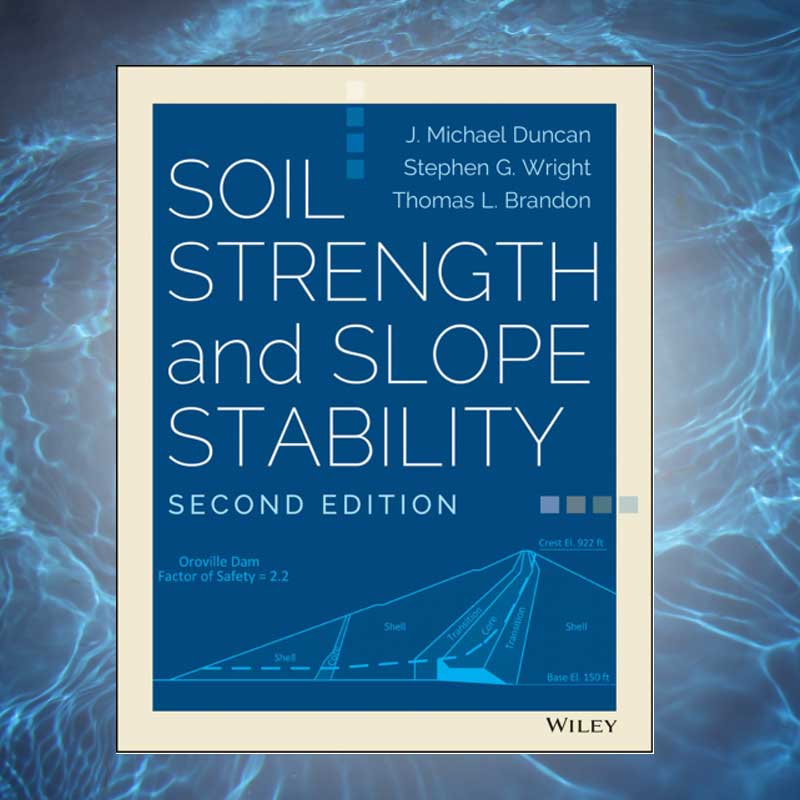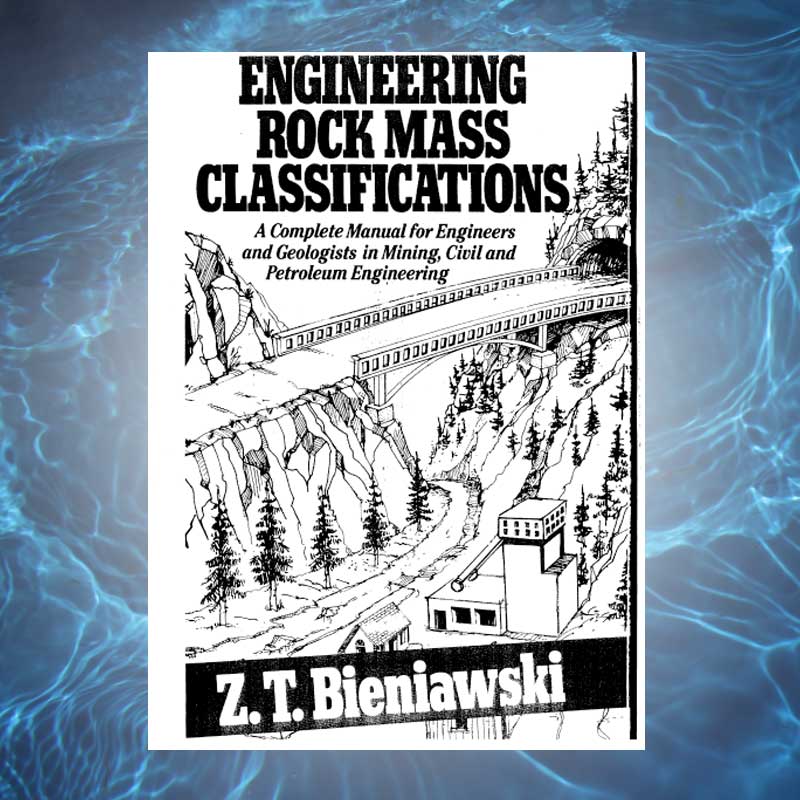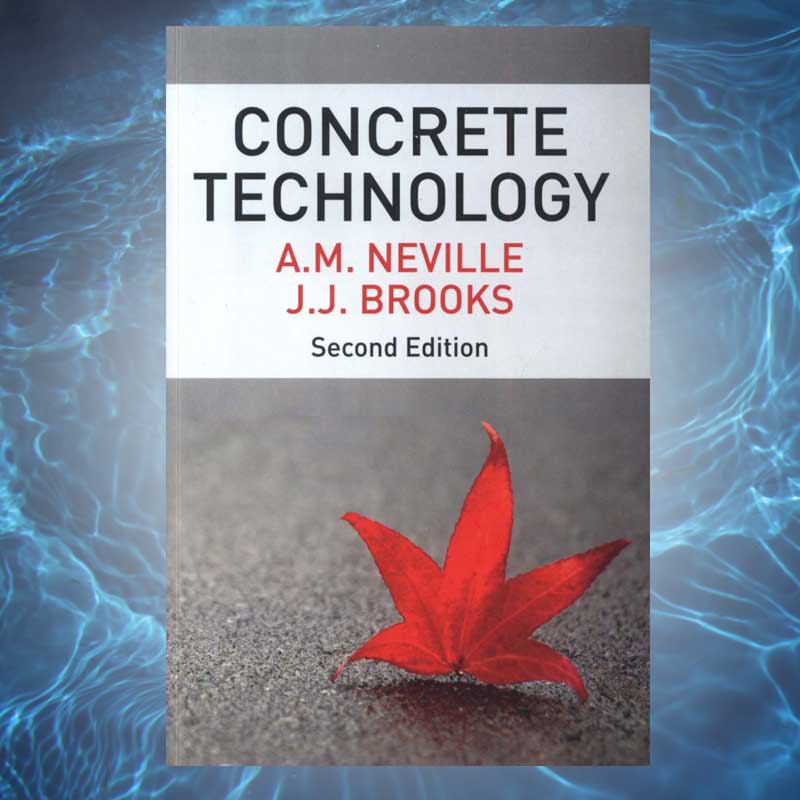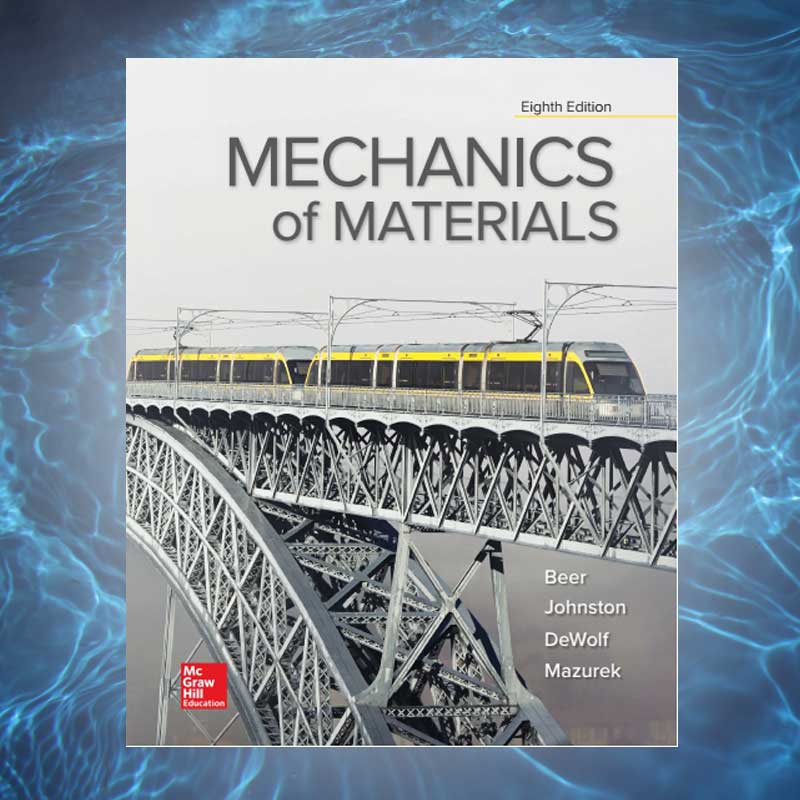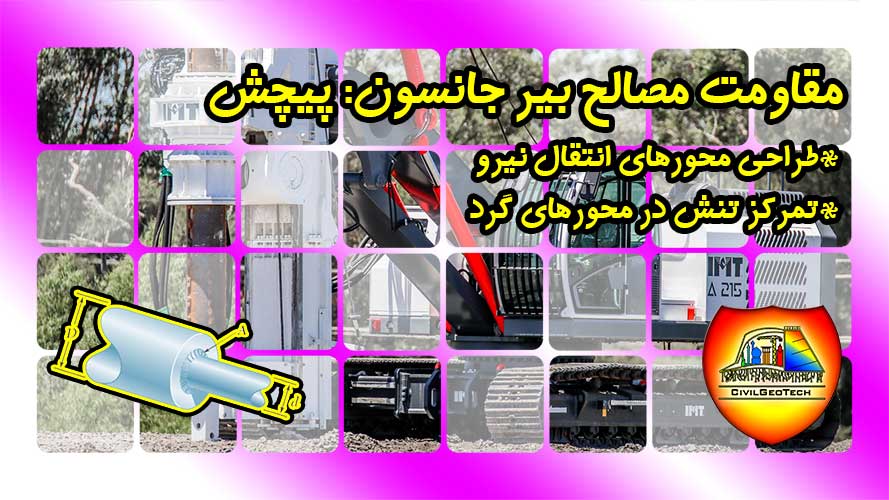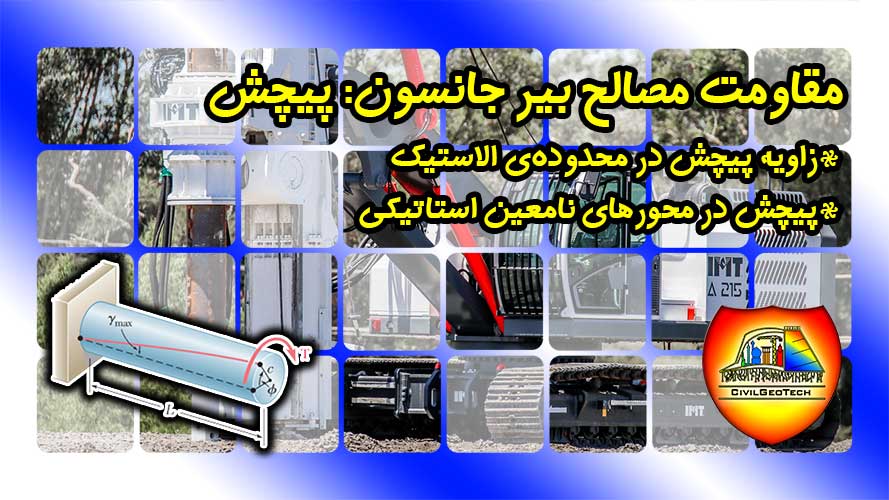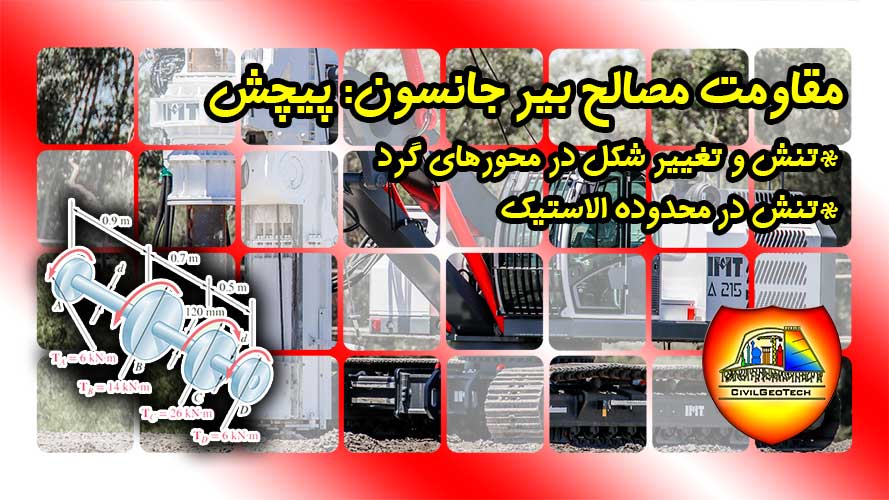Das, Braja, M. (2019). Advanced Soil Mechanics. 5th ed. CRC Press
مقدمه:
This textbook is intended for use in an introductory graduate level course that broadens (expands) the fundamental concepts acquired by students in their undergraduate work. The introductory graduate course can be followed by advanced courses dedicated to topics such as mechanical and chemical stabilization of soils, geoenvironmental engineering, finite element application to geotechnical engineering, critical state soil mechanics, geosynthetics, rock mechanics, and others.
The first edition of this book was published jointly by Hemisphere Publishing Corporation and McGraw-Hill Book Company of New York with a 1983 copyright. Taylor & Francis Group published the second, third, and fourth editions with 1997, 2008, and 2014 copyrights, respectively. The book has a total of 11 chapters and an appendix. SI units have been used throughout the text.
The following is a summary of additional materials given in this edition.
• Several new example problems have been added. The book now has more than 100 example problems which help the readers understand the theories presented. About 70 additional line drawings have been added to the text.
• In Chapter 1, “Soil aggregate, plasticity, and classification,” relationships for determination of liquid limit by one-point method from test results of fall cone have been added to Section 1.8.1. Section 1.13.1 provides several correlations for estimation of the relative density of granular soil. This section also has correlations between uniformity coefficient, angularity, and maximum and minimum void ratios of granular soil. Effect of nonplastic fines on maximum and minimum void ratios of granular soils is given in Section 1.14.1.
• In Chapter 3, “Stresses and displacements in a soil mass—two-dimensional problems,” stress determination for vertical line load located at the apex of an infinite wedge is presented in Section 3.3. Section 3.7 provides stress relationships for horizontal and inclined line loads acting at the apex of an infinite wedge. Section 3.12 describes the stress distribution under a symmetrical vertical triangular strip load.
• In Chapter 4, “Stresses and displacements in a soil mass—threedimensional problems,” vertical stress calculation below flexible circular area with parabolic and conical loading are presented in Sections 4.10 and 4.11, respectively. Also a relationship for vertical stress under a uniformly loaded flexible elliptical area is given in Section 4.12.
• In Chapter 8, “Consolidation,” Section 8.1 explains the fundamentals of the time-dependent settlement of saturated cohesive soil using the behavior of Kelvin model under load. Section 8.3.1 provides a simplified procedure developed by Hanna et al. (2013) to estimate the average degree of consolidation due to ramp loading. The log-log method proposed by Jose et al. (1989) and the Oikawa method (1987) to determine the preconsolidation pressure have been discussed in Section 8.5.1.1. A compilation of several correlations presently available in the literature for the recompression index of clay is given in Table 8.5. Design curves for prefabricated vertical drains have been elaborated upon in Section 8.17.
• In Chapter 9, “Shear strength of soils,” the relevance of various laboratory test methods to field conditions has been briefly discussed in Section 9.4. In Section 9.7 a discussion has been provided to quantify the difference between the secant friction angle (ϕsecant) and the ultimate friction angle (ϕcv) of granular soils based on the analysis of Bolten (1968). This section also includes the correlations for ϕcv for single mineral soil as discussed by Koerner (1970).
Recently developed correlations for drained friction angle of normally consolidated clay (Sorensen and Okkels, 2013) are summarized in Section 9.12. Section 9.15 provides several correlations for the undrained shear strength of remolded clay. Relationships for determination of undrained shear strength using tapered vanes have been added to Section 9.22.
• In Chapter 10, “Elastic settlement of shallow foundations,” the strain influence factor method for settlement calculation as provided by Terzaghi et al. (1996) has been discussed in Section 10.5.2. Settlement calculation based on the theory of elasticity as given in Section 10.6.1 has been substantially expanded. Elastic settlement in granular soil considering the change in soil modulus with elastic strain, and the effect of ground water table rise on elastic settlement of shallow foundations on granular soil have been discussed in two new sections: Sections 10.7 and 10.8.
• In Chapter 11, “Consolidation settlement of shallow foundations,” discussion of Griffith’s (1984) influence factor for determination of the average vertical stress increase in a soil layer has been added to Section 11.2.
این کتاب درسی برای استفاده در دوره مقدماتی سطح کارشناسی در نظر گرفته شده است که مفاهیم اساسی کسب شده توسط دانشجویان در کار کارشناسی خود را گسترش می دهد (بسط می دهد). دوره مقدماتی تحصیلات تکمیلی را می توان با دوره های پیشرفته اختصاص داده شده به موضوعاتی مانند تثبیت مکانیکی و شیمیایی خاک، مهندسی ژئومحیط زیست، کاربرد اجزای محدود در مهندسی ژئوتکنیک، مکانیک خاک حالت بحرانی، ژئوسنتتیک، مکانیک سنگ و غیره دنبال کرد.
چاپ اول این کتاب به طور مشترک توسط شرکت انتشارات نیمکره و شرکت کتاب مک گراو-هیل نیویورک با حق چاپ در سال 1983 منتشر شد. گروه تیلور و فرانسیس ویرایش های دوم، سوم و چهارم را به ترتیب با حق چاپ در سال های 1997، 2008 و 2014 منتشر کردند. این کتاب در مجموع دارای 11 فصل و یک پیوست است. واحدهای SI در سراسر متن استفاده شده است.
موارد زیر خلاصه ای از مطالب اضافی ارائه شده در این نسخه است.
- چندین مشکل نمونه جدید اضافه شده است. کتاب در حال حاضر دارای بیش از 100 مسئله مثال است که به خوانندگان کمک می کند تا نظریه های ارائه شده را درک کنند. حدود 70 طرح خط اضافی به متن اضافه شده است.
- در فصل 1، “خاکدانه، شکل پذیری، و طبقه بندی”، روابط برای تعیین حد مایع به روش یک نقطه ای از نتایج آزمایش مخروط سقوط به بخش 1.8.1 اضافه شده است. بخش 1.13.1 چندین همبستگی را برای تخمین چگالی نسبی خاک دانه ای ارائه می دهد. این بخش همچنین دارای همبستگی بین ضریب یکنواختی، زاویهای بودن و حداکثر و حداقل نسبتهای خالی خاک دانهبندی است. اثر ریزدانه های غیرپلاستیک بر حداکثر و حداقل نسبت های خالی خاک های دانه ای در بخش 1.14.1 آورده شده است.
- در فصل 3، “تنش ها و جابجایی ها در یک توده خاک – مسائل دو بعدی”، تعیین تنش برای بار خط عمودی واقع در راس یک گوه بی نهایت در بخش 3.3 ارائه شده است. بخش 3.7 روابط تنش را برای بارهای خط افقی و شیبدار که در راس یک گوه بی نهایت عمل می کنند، ارائه می دهد. بخش 3.12 توزیع تنش را تحت یک بار نواری مثلثی عمودی متقارن توصیف می کند.
- در فصل 4، “تنش ها و جابجایی ها در یک توده خاک – مشکلات سه بعدی”، محاسبه تنش عمودی زیر ناحیه دایره ای انعطاف پذیر با بارگذاری سهموی و مخروطی به ترتیب در بخش های 4.10 و 4.11 ارائه شده است. همچنین رابطه ای برای تنش عمودی تحت یک ناحیه بیضی شکل انعطاف پذیر با بارگذاری یکنواخت در بخش 4.12 آورده شده است.
- در فصل 8، “تثبیت”، بخش 8.1 اصول نشست وابسته به زمان خاک چسبنده اشباع را با استفاده از رفتار مدل کلوین تحت بار توضیح می دهد. بخش 8.3.1 یک روش ساده را ارائه می دهد که توسط هانا و همکاران توسعه یافته است. (2013) برای برآورد میانگین درجه یکپارچگی ناشی از بارگذاری رمپ. روش log-log پیشنهاد شده توسط Jose و همکاران. (1989) و روش Oikawa (1987) برای تعیین فشار پیش تحکیم در بخش 8.5.1.1 مورد بحث قرار گرفته است. مجموعه ای از چندین همبستگی که در حال حاضر در ادبیات موجود برای شاخص فشرده سازی مجدد خاک رس در جدول 8.5 آمده است. منحنی های طراحی برای زهکش های عمودی پیش ساخته در بخش 8.17 توضیح داده شده است.
- در فصل 9، “مقاومت برشی خاک”، ارتباط روش های مختلف آزمایش آزمایشگاهی با شرایط مزرعه به طور خلاصه در بخش 9.4 مورد بحث قرار گرفته است. در بخش 9.7 بحثی برای تعیین کمیت تفاوت بین زاویه اصطکاک سکانس (φ سکانت) و زاویه اصطکاک نهایی φcv خاکهای دانه ای بر اساس تجزیه و تحلیل Bolten (1968) ارائه شده است. این بخش همچنین شامل همبستگی برای ϕcv برای خاک معدنی منفرد است که توسط Koerner (1970) بحث شده است. همبستگی های اخیراً توسعه یافته برای زاویه اصطکاک زهکشی شده رس معمولی تلفیقی (Sorensen and Okkels, 2013 )در بخش 9.12 خلاصه شده است. بخش 9.15 چندین همبستگی را برای مقاومت برشی زهکشی نشده رس قالبگیری شده ارائه میکند. روابط برای تعیین مقاومت برشی زهکشی نشده با استفاده از پره های مخروطی به بخش 9.22 اضافه شده است.
- در فصل 10، ” نشست الاستیک پی های کم عمق”، روش ضریب تاثیر کرنش برای محاسبه نشست همانطور که توسط ترزاقی و همکاران ارائه شده است. (1996) در بخش 10.5.2 مورد بحث قرار گرفته است. محاسبه ته نشینی بر اساس تئوری کشش همانطور که در بخش 10.6.1 ارائه شده است به طور قابل ملاحظه ای گسترش یافته است. نشست الاستیک در خاک دانه ای با در نظر گرفتن تغییر مدول خاک با کرنش کشسان و تأثیر افزایش سطح آب زیرزمینی بر نشست الاستیک پی های کم عمق روی خاک دانه ای در دو بخش جدید بحث شده است: بخش های 10.7 و 10.8.
- در فصل 11، “استقرار تحکیم پی های کم عمق”، بحث ضریب تاثیر گریفیث (1984) برای تعیین میانگین افزایش تنش عمودی در یک لایه خاک به بخش 11.2 اضافه شده است.
فهرست عناوین:
1 Soil aggregate, plasticity, and classification
2 Stresses and strains: Elastic equilibrium
3 Stresses and displacements in a soil mass: Two-dimensional problems
4 Stresses and displacements in a soil mass: Three-dimensional problems
5 Pore water pressure due to undrained loading
6 Permeability
7 Seepage
8 Consolidation
9 Shear strength of soils
10 Elastic settlement of shallow foundations
11 Consolidation settlement of shallow foundations

